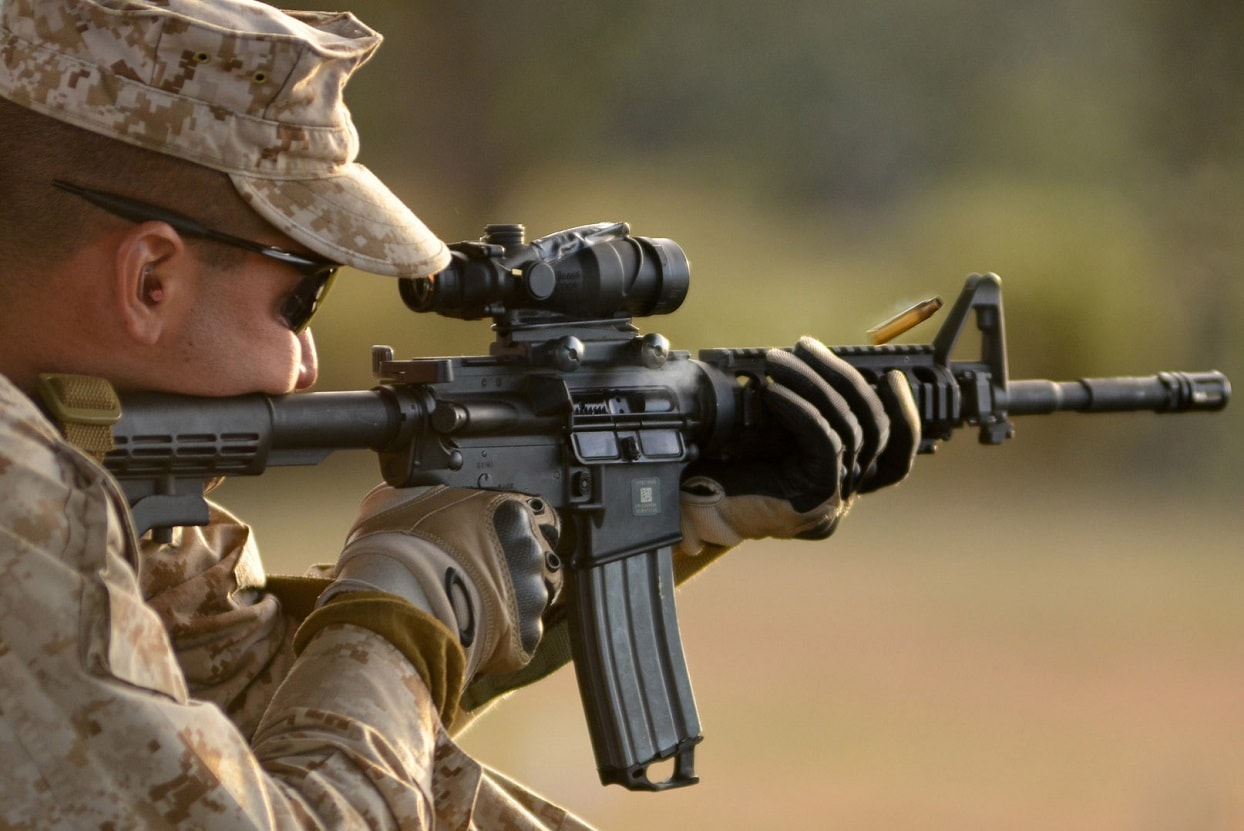Bigger isn’t always better. That truism is embodied by the M4 carbine — and its variants such as the M4A1 — which has become a runaway success as the descendant of the full-size M16 rifle series that spawned it.
Granted, the M4 was not the first historical example of a chopped & channeled version of the M16; in the mid-1960s, there was the CAR-15 AKA Colt Commando, and in the 1990s some U.S. Air Force units had the GUU-5/P.
But ’twas the M4 that enabled the compact version of the M16/AR-15 series to gain mainstream acceptance in the U.S. Armed Forces truly. Let’s see how and why.
Mama M16’s Baby Girl
Interestingly, Colt actually received the initial development contract way back in 1984 —initially intended for use by pogues, er, non-infantry personnel — and by 1986 first XM4 carbine prototypes were delivered to US Army for initial tests.
It took nearly an entire extra decade to finalize and approve the design, and in 1994 US DoD officially adopted M4 and M4A1 carbines for service.
However, it wasn’t until the post-9/11 era and the accompanying Global War On Terror (GWOT) that the M4 really took off; after all, that compactness definitely came in handy for hunting Taliban and al-Qaeda bad “tangos” within the daunting confines of the caves of Afghanistan, as well as battling insurgents in house-to-house firefights during Operation Iraqi Freedom.
Feedback from the troops in after-action reports emanating from these battlefields resulted in some improvements in the primary weapon, especially the heavier barrel, which better withstands protracted and intense firing, thus improving the overall reliability and long-term durability of the weapon.
Yes, the smaller weapon equated to a shorter effective range and decreased lethality/stopping power compared with the full-sized parent gun, but the Army, Air Force, and Marine Corps alike deemed this to be an acceptable tradeoff in exchange for the greater portability and handiness in close-quarter battle (CQB) situations.
In fact, in 2013, a Ranger unit in Afghanistan raised quite a few eyebrows when they refused to take the then-newfangled XM25 25x40mm semiautomatic grenade launcher along, preferring to stick with their trusty M4s instead.
Roughly 80% of the M4 is based on M16 parts, making the two weapons at least somewhat interchangeable and thus partially reducing new manufacturing costs. (Your Tax Dollars At Work.) The differences are: a shorter, 14.5-inch barrel, and a telescoped shoulder stock. Internally it features a different bolt carrier buffer, shorter gas system, and an altered feed ramp cut in the barrel extension and the receiver, to ensure reliable feeding; in addition, nearly all M4 carbines, except for the earliest production run, feature so-called “flat-top” receivers with integrated Picatinny rail, which replaced the M16A2-style carrying handle.
Personal Shooting Impressions
I don’t personally own an M4 or any other AR-15 variants, and am in no hurry to buy one either, as quite frankly, I’m just not a fan of the weapons system. Sure, it’s accurate and lightweight, but I prefer the simplicity, lower maintenance, durability, and fewer small parts on the Avtomat Kalashnikova, SKS carbine, Vz-58, and their 7.62x39mm cartridge alike. (Let the “Russian collusion” jokes fly for that confession, folks; go on, I can take it!). That said, I still got my fair share of trigger time on the M4 both as an Air Force cop and as a damn dirty stinkin’ mercenary, er, privateer, er, private military contractor (PMC).
In fact, thinking back to the enlisted portion of my USAF career, back when I was a young Airman 1st Class/E-3 lugging a full-sized M16A2 around the tight confines of the Missile Alert Facilities (MAFs) of the “Nuke-yu-lur,” er, nuclear missile fields of Minot AFB, North Dakota from February 2000 to July 2001, I found myself longing for the shorter ‘n’ sweeter compactness of the M4. Well, it was after I sold my soul to The Dark Side, er, got my commission via Officer Training School (OTS), and said goodbye to the missile fields that I finally got my wish; better late than never, eh? Ironically, though I consistently qualified with the more desirable weapon, I never actually shot Expert with it like I did with the full-sized A2. Oh well, them’s the breaks, eh?
Bonus: M4 Carbine Photo Essay
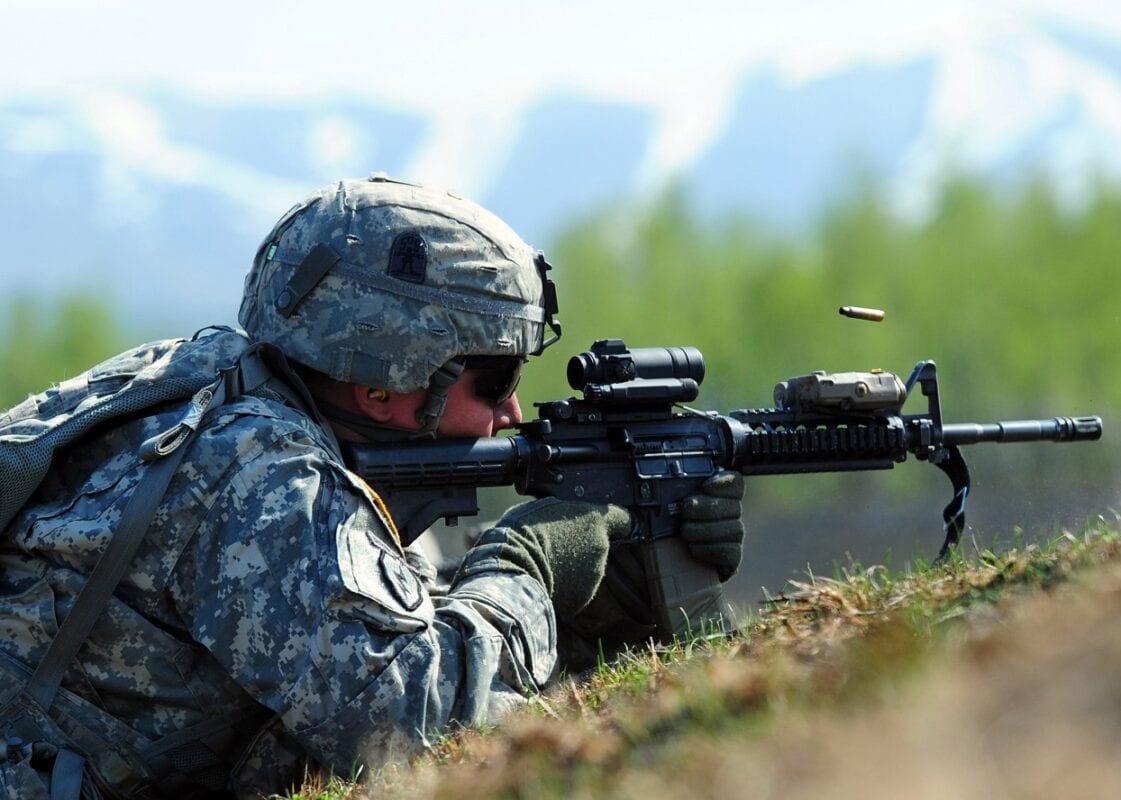
JOINT BASE ELMENDORF-RICHARDSON, Alaska — Cpl. Johnny Hurst, assigned to A Company 3rd Battalion (Airborne) 509th Infantry Regiment, a native of Chicago, Ill., fires his M-4 carbine during a live-fire and movement-to-contact operation on the Infantry Squad Battle Course at Joint Base Elmendorf-Richardson, Friday, May 31, 2013. The Soldiers focused on core infantry skills such as fire team movement, communication, shifting fire, and once on the objective identifying and eliminating weapons caches and treating and evacuating casualties. (U.S. Air Force photo/Justin Connaher)
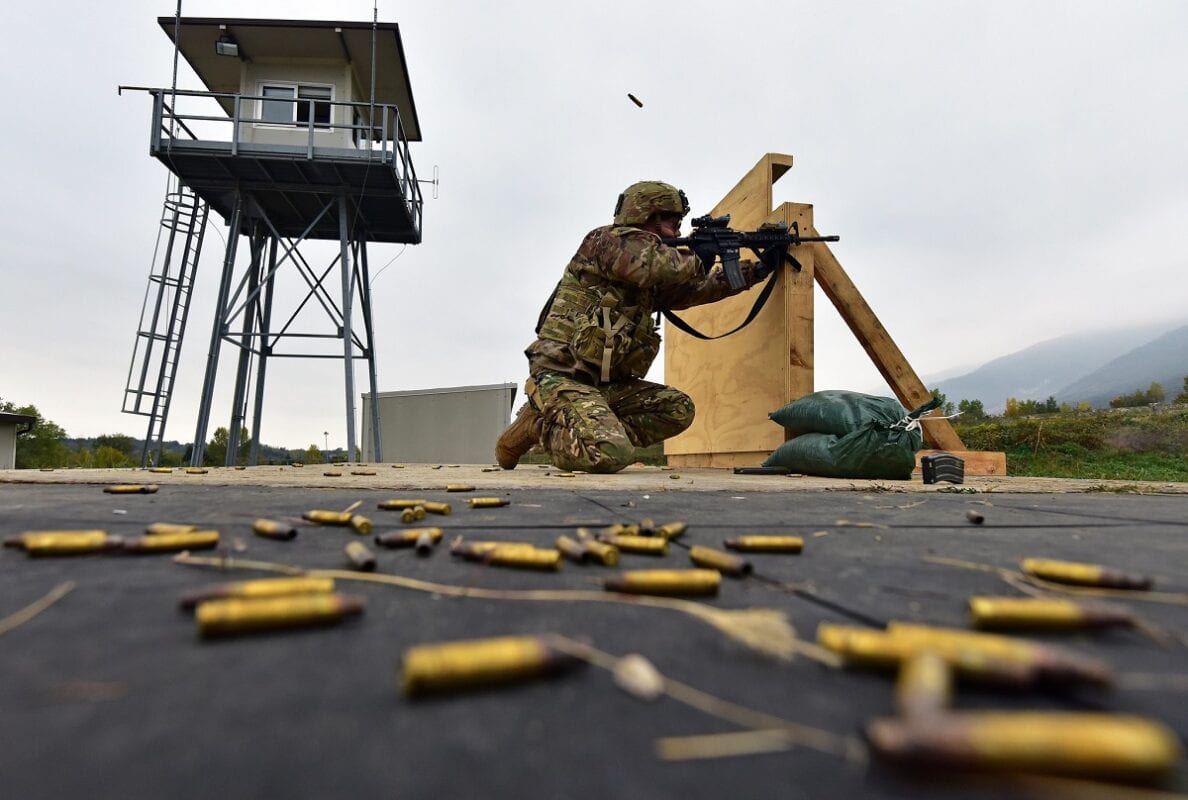
A U.S. Army Paratrooper assigned to the 1st Battalion, 503rd Infantry Regiment, 173rd Airborne Brigade engages pop-up targets with M4 carbine in kneeling position during marksmanship training at Cao Malnisio Range, Pordenone, Italy, Oct. 25, 2018. The 173rd Airborne Brigade is the U.S. Army Contingency Response Force in Europe, capable of projecting ready forces anywhere in the U.S. European, Africa or Central Commands’ areas of responsibility. (U.S. Army photos by Paolo Bovo)
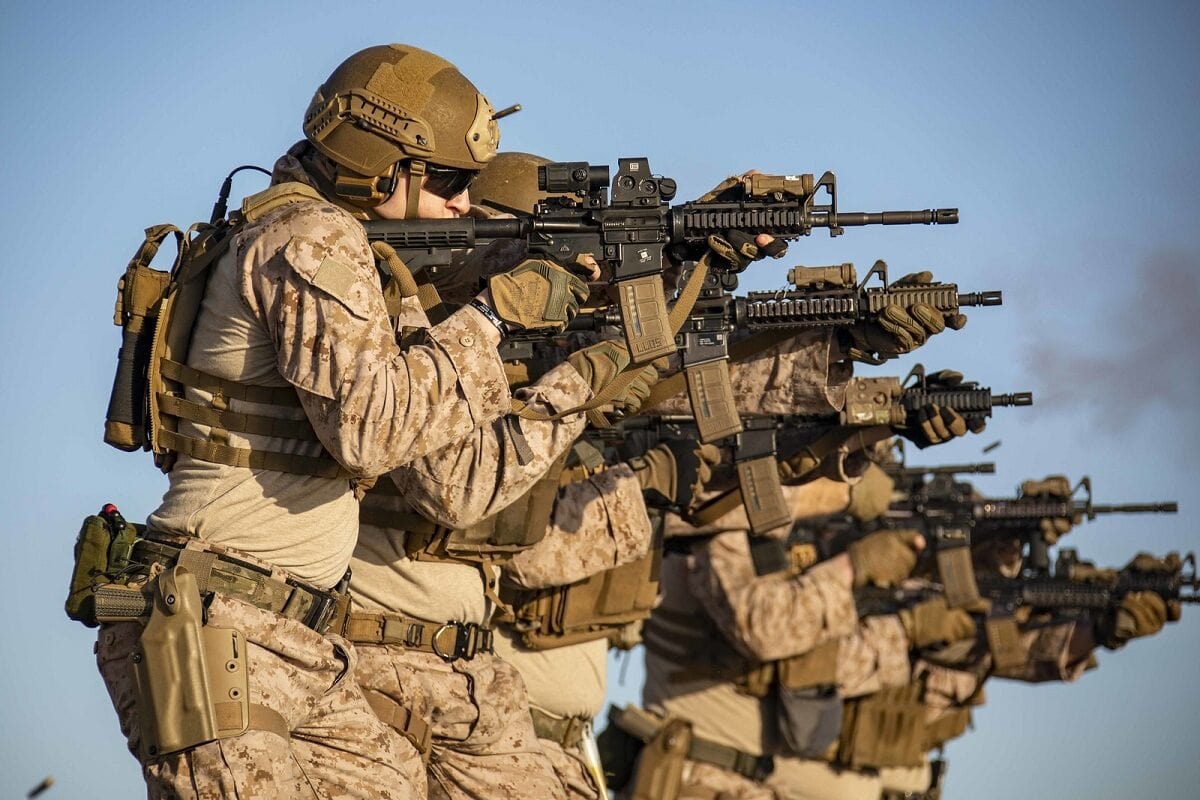
U.S. Marines assigned to the 22nd Marine Expeditionary Unit fire M4A1 carbines during an exercise on the flight deck aboard the Wasp-class amphibious assault ship USS Kearsarge (LHD 3) in the U.S. 5th Fleet Area of Operations, Feb. 8, 2019. Kearsarge is the flagship for the Kearsarge Amphibious Ready Group and, with the embarked 22nd MEU, is deployed to the U.S. 5th Fleet area of operations in support of naval operations to ensure maritime stability and security in the Central Region, connecting the Mediterranean and the Pacific through the western Indian Ocean and three strategic choke points. (U.S. Navy photo by Mass Communication Specialist 2nd Class Casey Moore)

A Marine with the 22nd Marine Expeditionary Unit’s female engagement team fires an M4 carbine during an advanced course of fire on Fort Pickett, Virginia, Feb. 18. The course of fire, known as Table 3, requires Marines to pivot and move laterally while shooting at targets at known and unknown distances.
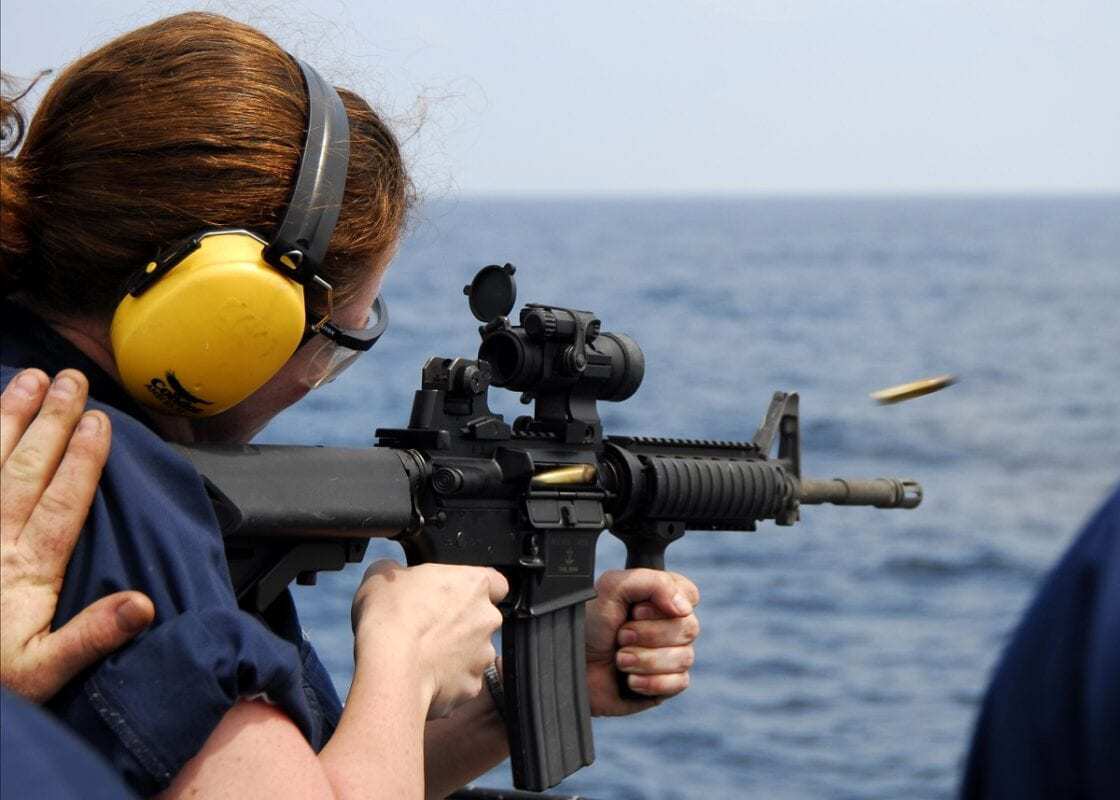
080725-N-4236E-391
ATLANTIC OCEAN (July 25, 2008) Fire Controlman Seaman Rachel Hubley fires an M4 carbine from the fantail of the guided-missile cruiser USS Vella Gulf (CG 72). Vella Gulf is participating in Joint Task Force Exercise (JTFEX) 08-4 as a part of the Iwo Jima Expeditionary Strike Group. (U.S. Navy photo by Mass Communication Specialist Seaman Chad R. Erdmann/Released)
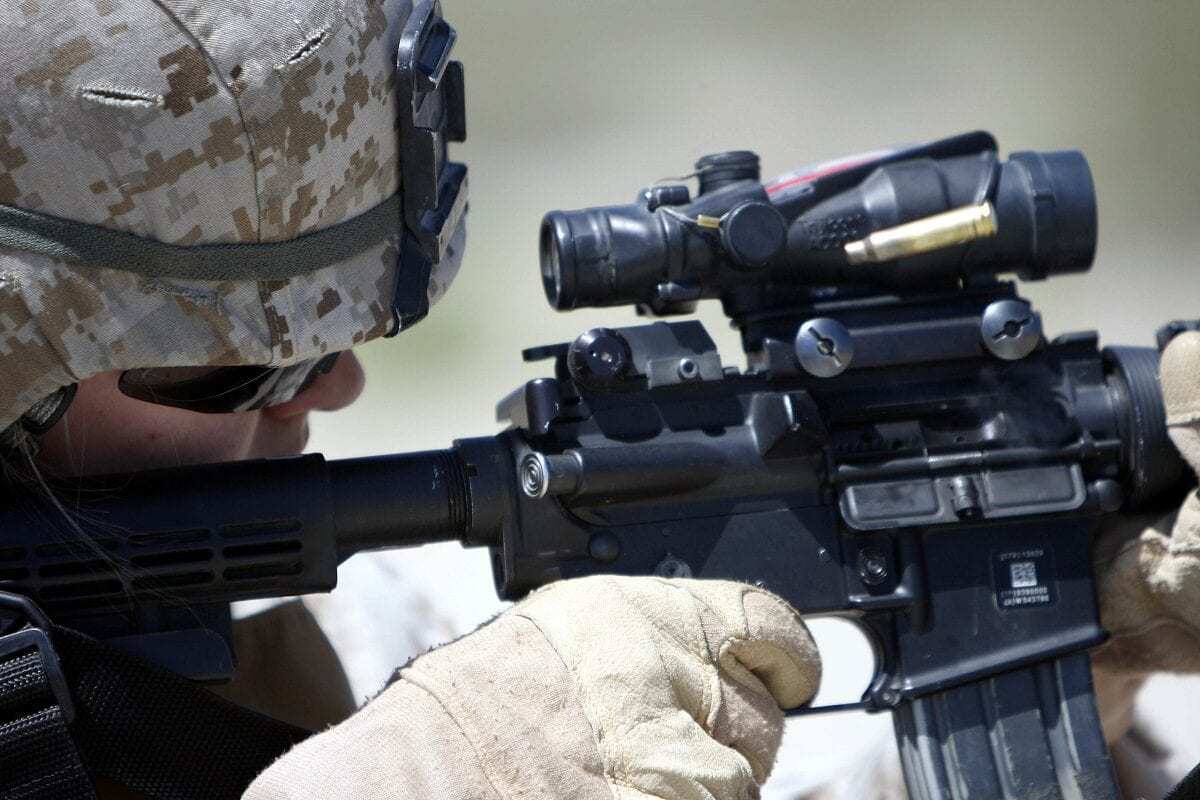
M4 Carbine. Image: Creative Commons.
Christian D. Orr has 33 years of shooting experience, starting at the tender age of 14. His marksmanship accomplishments include: the Air Force Small Arms Ribbon w/one device (for M16A2 rifle and M9 pistol); Pistol Expert Ratings from U.S. Customs & Border Protection (CBP), Immigration & Customs Enforcement (ICE), and the Federal Law Enforcement Training Center (FLETC) Criminal Investigator Training Program (CITP); multiple medals and trophies via the Glock Sport Shooting Foundation (GSSF) and the Nevada Police & Fires Games (NPAF). Chris has been an NRA Certified Basic Pistol Instructor since 2011. In his spare time, he enjoys (besides shooting, obviously) dining out, cigars, Irish and British pubs, travel, USC Trojans college football, and Washington DC professional sports.

